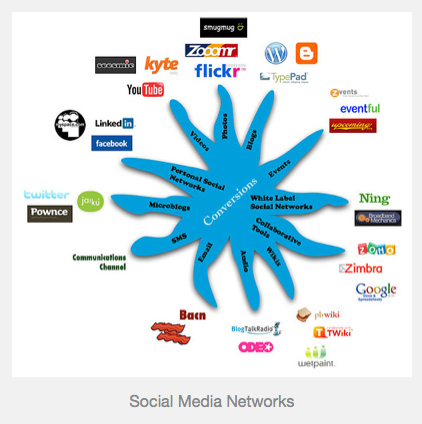Welcome to a new series of social media tips aimed primarily at a police audience, but hopefully applicable to a wider group of people too, especially those in the public sector. This series of posts will aim to identify some good practice and useful hints and tips for police officers and staff to consider when using social media.
Part 1: What Social Media networks should I use?

There is some confusion amongst people new to social media about where to start. Is Twitter better than Facebook? What is LinkedIn? Wasn’t Bebo or MySpace a really big thing a while ago? Does anyone still use Friends Reunited?
In choosing what social media platform to start working with there are a few key pointers to bear in mind.
- Any choice you make now may well be out of date in a few weeks / months / years. This is a fast moving area – Twitter is only five years old after all! Have a look at the other people using that network and see if they are the sort of people you are trying to reach. Each of the current big three have different audiences.
- Facebook is by far the largest, and has mainly social content. This can be a good place to start for policing as you should get a relatively large audience, and you can easily add pictures, video, audio and links to other useful web sites. Bear in mind that other people can post things on ‘your’ page however, which may cause you some issues. Check out PSNIArds for a good example of police use.
- LinkedIn is a business networking tool in the main, and has far less of the social element. It can be a good place to consider if you are looking to identify local businesses for example.
- Twitter is best for rapid real time updates. It has a limit of 140 characters per update, and posting links and pictures etc is more complex than other sites, but this does mean content is quick and easy to digest, and more conversational than other sites. This can allow a conversation to develop between police and public – See PC Ed Rogerson for a good use of this technique.
- You can use more than one platform at the same time. Posting from Twitter to Facebook for example can be done automatically once the accounts are linked simply by adding#fb to the end of a Tweet. Many social media sites provide similar links.
- Think wider than the big three (Facebook, LinkedIn, Twitter) – there are loads of other sites out there that have big user groups. If you are looking for a certain demographic, find out what sites they tend to use, and join in the conversations there.
- Be innovative in your use of websites. Photography site Flick’r allows users to post up their photographs. GMP have used this to their advantage, loading up lots of official pictures, with captions explaining what they are of, and providing links to their corporate website. Flick’r is now one of the main drivers of traffic to their official website.
The final tip is to use social media to ask others for advice. Not sure of the best social media network to use to reach the Chinese or Russian community?* Ask your followers on Twitter. Someone out there will have the answer.
*The answer is probably RenRen and Kontakte respectively.
Got a good example of police use of other social media sites? Post up a comment.
This post was previously published on Partrdigej’s blog.
Justin Partridge is a senior manager for Lincolnshire Police in England. He also works on Local Policing and Partnerships for the Association of Chief Police Officers (ACPO).
Justin Partridge has worked in the public sector since leaving university, and for the police since 2003. After being one of only three non-sworn staff selected for the prestigious Police Strategic Command Course (for those who aspire to the most senior posts in UK policing), he started working on the national Local Policing and Partnerships area with chief officers from across the UK, and with partners from the Home Office, NPIA, APA and elsewhere.
Justin is passionate about making a difference to people, and see social media and new technologies having a major role in this – especially in policing and the wider public sector. He blogs on a variety of issues, predominantly around police and technology, and can be found on Twitter talking about much the same.


